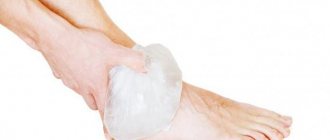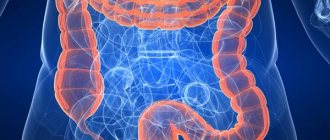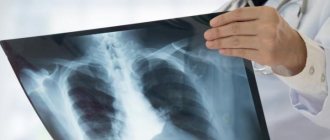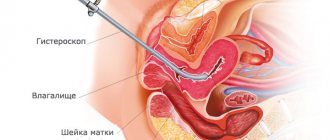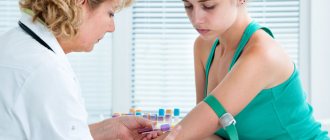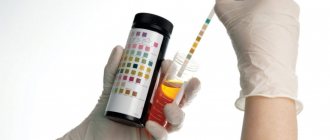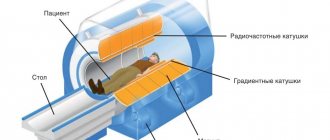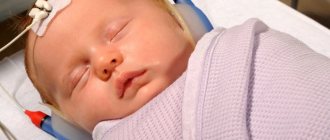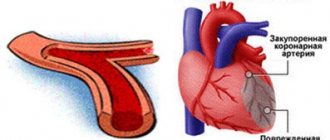EEG-video monitoring is a special study during which the doctor has the opportunity to obtain a long-term simultaneous recording of the electroencephalogram, audio and video data about all types of human night activity. Monitoring is carried out over a long period of time, therefore it provides a lot of valuable information and allows you to accurately diagnose almost all neurological disorders.
EEG monitoring is nighttime and is prescribed in complex clinical cases when interictal (regular) EEG does not accurately diagnose the pathology. This study is especially relevant in the differential diagnosis of psychogenic and epileptic convulsive conditions, which cannot be recognized by other methods.
EEG monitoring is synchronous long-term recording of EEG and video recording of patient behavior
Separately, it is worth mentioning the value of research in pediatric practice, when a baby, for unknown reasons, begins to have trouble falling asleep or wakes up frequently at night. In pediatric neurology, EEG recording often becomes the only way to reliably detect complex pathologies of the central nervous system.
The main reasons for ordering this examination
EEG monitoring of night sleep in children is used to diagnose convulsive conditions. Video monitoring determines the coordination of the work of all parts of the brain, identifies vascular or degenerative pathologies, epilepsy or Alzheimer's disease. Video EEG monitoring of a child helps determine how effective the therapy is. Such a study is also prescribed in the following cases:
- epilepsy in any form;
- vegetative-vascular dystonia;
- difficulties with speech development;
- injuries;
- neoplasms in the brain;
- acute cerebrovascular accidents;
- a sharp decline in cognitive functions;
- febrile seizures;
- nonepileptic paroxysms;
- conversion attacks.
The safety and high information content of hourly EEG monitoring make it a leader in the field of early detection of most neurological pathologies. An annual examination will allow you to promptly recognize serious diseases and take timely measures for treatment.
Reviews from parents
The opinions of parents whose children have undergone nighttime sleep EEG vary. However, most of them are positive. Moms and dads say that in the diagnostic room, the medical staff tries to create the most comfortable environment for relaxation: dim lighting, quiet and calm music, and the absence of bright objects.
In some cases, the doctors themselves try to calm and prepare the child for the procedure. Of course, it is easy to establish contact with school-age children. They tell kids that a cap with sensors is a superhero helmet or a helmet for flying into space.
Separate mention should be made of the survey results. Parents say that EEG gives answers to literally all questions. Based on the results of the procedure, the doctor can explain why the child sleeps poorly, why he has a delay in speech or physical development. The treatment prescribed afterward allows you to eliminate the disease or correct its manifestations.
Negative reviews are usually associated with the high cost of an electroencephalogram. You can also get the service for free, but the waiting list for registration is usually several weeks or even months. In some situations, it is impossible to hesitate, which is why parents agree to a paid procedure. After all, there is nothing more valuable than the health of your own child.
Preparation for the study and limitations for its conduct
Night EEG is a completely safe study. But it will not be carried out if there is an extensive purulent-inflammatory process on the scalp. A relative contraindication may be an exacerbation of mental illness. In this case, inappropriate behavior of the patient is possible, but the study can be carried out after preliminary sedative therapy.
At the preparatory stage, tranquilizers and some anticonvulsants are discontinued - they can distort the results of the examination. The remaining recommendations for preparation are as follows:
- refusal to take psychostimulants (tea, coffee, alcohol) the day before the examination;
- 2 hours before the procedure you need a hearty breakfast and a complete cessation of smoking;
- the head must be clean, the use of cosmetics is not allowed;
- remove all metal jewelry from the body.
The study is often prescribed during sleep. In this case, the patient is recommended to refrain from sleeping at home for 24 hours. Before the procedure, the doctor will prescribe a light sedative, which will allow the patient to sleep soundly during the entire examination. This approach is used in complex diagnostic cases, allowing the identification of pathological brain activity.
Sleep deprivation in children
Sleep deprivation, or regular lack of sleep, is a problem that not only adults, but also children have to face.
In babies, it can be caused by intrauterine lesions of the central nervous system, including birth injuries. In preschool children, deprivation is associated with attention deficit on the part of adults. We are talking about situations when, for example, a child is bought a lot of gifts, but at the same time they talk to him or go for walks little. At school age, increased anxiety associated with a new team, communication with peers, and mastering educational material comes to the fore.
Constant lack of sleep leads to health problems and the development of neuroses. Therefore, at the initial stage it is necessary to find out the causes of the disorder and begin therapy. Night EEG helps in this matter.
Where is this diagnosis carried out?
EEG monitoring is carried out under the supervision of qualified specialists
Today, special sleep EEG standards have been developed. Their necessity is dictated by a number of conditions of this study:
- experienced doctors with a set of necessary medications;
- high-tech equipment;
- good shielding from network or atmospheric interference, which can distort the result.
Choosing a place where to do daytime EEG monitoring, especially for a child, needs to be picky. This is partly due to the possibility of an epileptic seizure, which may be triggered by the study itself, and the patient will require immediate medical attention.
Deprivation
Deprivation is a delay in sleep that occurs as a result of severe distress or conscious choice. In this state, a person, without reacting to external stimuli, is capable of normal activities in everyday life. Deprivation is characterized by the appearance of hallucinations, space and time change places, some things begin to materialize, and quite vivid association pictures emerge from the depths of memory. The person becomes irritable, somewhat aggressive and forgetful. It is difficult for him to find his way, and he often experiences headaches. If you are deprived, it is recommended not to leave the house again and not to drive.
Electroencephalography
An EEG with sleep deprivation is performed when it is necessary to establish the presence of epileptic activity (hidden). Delayed sleep provokes epileptic seizures. Research is permitted only under the supervision of an experienced professional.
Changes in the EEG in some forms of epilepsy are very pronounced. Sometimes they can be “caught” while the patient is sleeping. Using the study, it is possible to detect epileptic activity even if it did not manifest itself during the day, during the so-called provocative tests.
What is research?
Night EEG video monitoring, in contrast to standard EEG, allows you to most accurately determine the picture of brain biopotentials, identify parasomnias and minimal neurological disorders. Especially often this approach justifies itself when diagnosing various forms of epilepsy. Night monitoring can last up to 10 hours, and highly sensitive equipment will accurately record all parameters of brain function.
During the study, in addition to recording the electrical activity of the brain, involuntary movements of the eyeballs, short-term tremors, as well as moments of switching off consciousness will be taken into account. Analysis of such complex data significantly improves diagnostic accuracy. Daily video monitoring begins while the patient is awake.
The location for the procedure is a room with good sound insulation. In it, the patient has the opportunity to sleep peacefully under the constant “supervision” of audio-video equipment. In some clinics, medical personnel are present in the office, but more often the connection with the patient is maintained using equipment - this allows the patient to relax and fall asleep more quickly.
The electrodes are attached in a special way so as not to cause inconvenience to the patient
Before the patient is left alone and tries to fall asleep, a special cap with built-in electrodes is placed on his head. Electrical activity indicators are recorded by a special device that receives and multiplies the patient’s electrical impulses. Based on these data, an activity schedule is drawn up, giving the doctor a lot of useful information.
There are several options for such a study. In addition to long-term monitoring, methods can be used to “provoke” attacks of the disease. For this purpose, some tests are prescribed - hyperventilation, rhythmic photostimulation, sleep deprivation. Occasionally, all previously prescribed anticonvulsants are discontinued. This diagnosis helps in cases of infrequent epilepsy attacks, when it is difficult to detect a seizure by other means.
Electroencephalogram result
EEG recording looks like a curve printed on graphs. Each graph is pre-deciphered. The result of the decoding is described in the doctor’s report.
Decoding can only be done by a highly qualified specialist who has undergone special training.
The result of EEG brain activity depends on key parameters, one of which is brain rhythms - alpha, beta, theta and delta.
Deciphering a healthy person without pathologies will be accompanied by the following indicators;
- during wakefulness, alpha and beta rhythms predominate;
- rhythmic coherence in both hemispheres;
- absence of spikes (peaks) of bioelectric impulses;
- stability of brain activity even when reacting to different load tests.
When deciphering indicators of brain activity, many factors are taken into account, ranging from age and genotype, right up to all previously conducted studies and examination of medical records.
The more thorough the analysis of all related factors, the more accurate the result in the conclusion. Much depends on the clinic where you are being examined. There are institutions with famous doctors, for example, the Neuro-Med Center for Pediatric and Adult Neurology or, on the contrary, small private laboratories.
In central clinics prices are high, ranging from 5 to 20 thousand rubles. and more for daily EEG video monitoring. In simpler institutions from 400 rubles. up to 1500 rub.
But the result does not depend on the cost, but on a conscientious attitude towards patients.
How to properly prepare for the procedure
Before the procedure you must:
- do not consume any substances that affect the central nervous system - alcohol, caffeine-containing drinks, chocolate for two days; do not smoke before the procedure;
- Tell your doctor about taking any medications so that he can take their effects into account when assessing the results or stop treatment for several days;
- the night before, eliminate stress and additional stress in the form of prolonged viewing of TV, computer games, etc.;
- wash your hair to remove sebum and dandruff;
- do not wear metal jewelry.
In what cases does an EEG help make a diagnosis?
The method helps to identify the causes of insomnia and eliminate them with the help of medication.
Allows you to make the correct diagnosis for epilepsy, vascular, inflammatory and metabolic-dystrophic disorders of the central nervous system. This diagnostic method is of particular importance for identifying tumors, as it allows one to determine their location.
In children, the degree of brain damage is revealed, which allows adequate treatment to be prescribed.
Learn more about which medications will help you cope with insomnia
